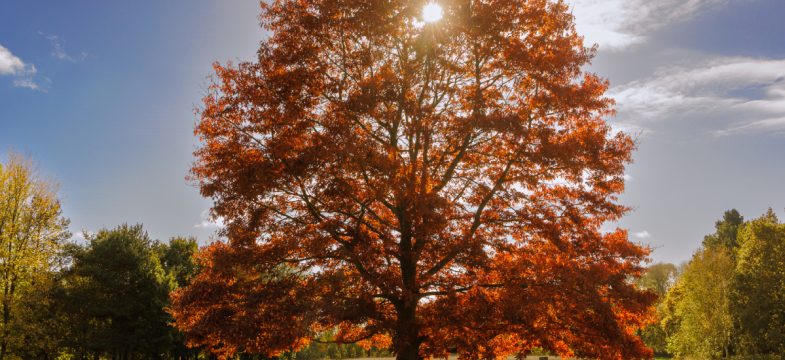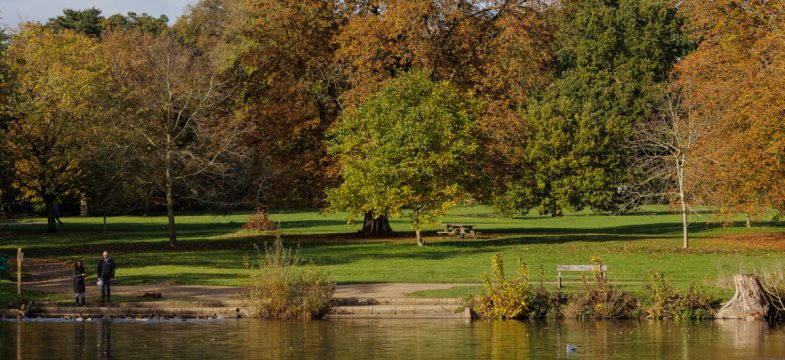A park flourishing with an abundance of wildlife, an arboretum, lakes and ponds, colourful wildflower meadows and open grassland.
Accessible paths
Benches
Disabled car park
Disabled toilets

Facilities
- Picnic area
- Play area
- Toilets
Find us
We are located in west Leicestershire, 1 mile from the A447, immediately to the east of Market Bosworth town. The country park’s entrance and car park can be accessed from the B585 which leads into the market town.
Opening times
All our parks are open every day.
The car park allows entry from 7am until the following times:
December – January: 4pm
February: 5pm
March: 6pm
April: 7pm
May – August: 8pm
September: 7pm
October: 6pm
November: 5pm
What to see and do at Market Bosworth Country Park

Nature
Market Bosworth Country Park is an open parkland landscape with majestic mature specimen trees, interspersed with small areas of woodland. The park also incorporates ‘Bow Pool’ lake and a series of ponds, supporting diverse habitats for a wide range of species.
The wildflower meadows within the parkland contribute to greater biodiversity and attract a wide range of pollinating insects in the spring and summer months. Work with a local beekeeper has seen the installation of two mature hives in this area of the park and the production of honey. A visit to the wildflower areas in the spring can be rewarded with bluebells, fritillaries, ox-eye daisies, cowslips and primroses.
The woodlands and other habitats are ideal for bird watching and spotting mammals such as foxes and brown hares.

Woodland and Arboretum
The wooded areas of the park support a range of native trees. Here, keen bird watchers can while away hours at the bird feeding station where species such as great spotted woodpeckers, green woodpeckers and nuthatches are regular visitors.
The arboretum contains a wide-ranging collection of exotic tree species including towering coast and dawn redwoods, Himalayan birches Japanese maples, evergreen oaks, hemlocks and eucalyptus. A visit to the arboretum is a must at any time of year – watch out for the splashes of colour from flowers in the spring and the vivid fiery colours from Japanese maples in the autumn months.

Activities
With its open grassland, there’s plenty of space for everyone to enjoy at our park. Picnic and children’s play areas offer a great day out for families whether it’s a kick-about with a football or flying a kite. A network of surfaced paths provide access for all and there are many seats along the trails for visitors to sit and enjoy the peace and quiet.
Parkrun hold a weekly 5k community event. It’s also a great starting point for longer walks around the local countryside. Follow the route of the Leicestershire Round long distance path south, to the village of Sutton Cheney. Call in at the Battle of Bosworth visitor centre, walk the towpath of the Ashby canal or ride on the Battlefield Line which terminates at Shenton Station.
For those angling, a current rod licence is required for Bow Pool during fishing season. First time anglers will need to buy a rod fishing licence.

History
The parkland landscape which exists today was originally established by the Harcourt family who acquired the land shortly after the Norman conquest. In 1567, the estate, which at the time was known as the ‘Southwood’, was purchased by the Dixie family. In 1665 the family was granted the right to enclose 400 acres to make a park for ‘stags and other wild beasts’ and the 400 acres included the whole of the present-day country park.
During the late 18th century, the park was landscaped in the style of the famous landscape architect, Capability Brown, with the inclusion of small woods and fine individual trees. At this time, the park was grazed by England’s only herd of pure black fallow deer.
The country park was purchased by the county council in early 1970s. Works have recently been carried out to conserve and enhance the historic parkland landscape with the planting of 60 new specimen trees to commemorate the Queen’s diamond jubilee. These include Elm trees which have a high resistance to Dutch Elm disease – a species which once graced much of the English countryside.



